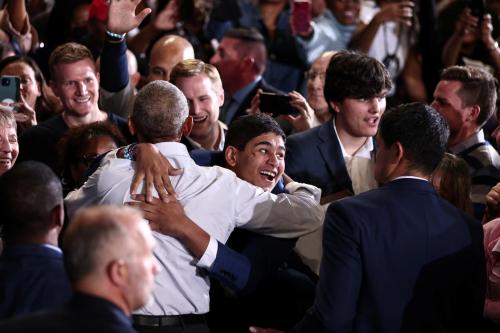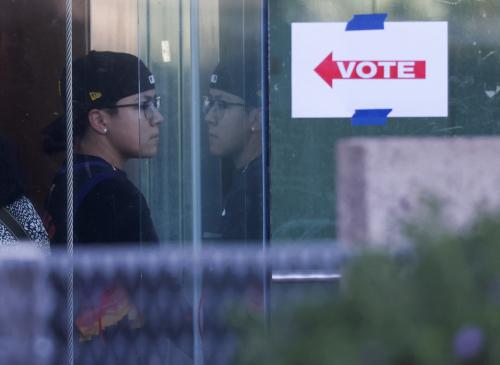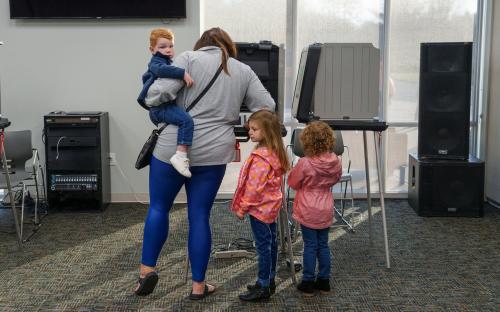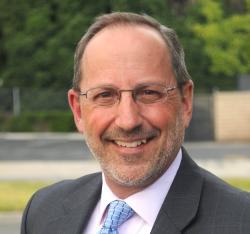In this series we look at how younger voters are likely to impact future elections and American politics going forward.
America’s youngest voters are going to play a key role in shaping the nation’s politics in 2024 and the years ahead. Last year, voters under 30 registered their second-highest turnout ever in a midterm. It was also an election that saw a new generation join the ranks of Congress, (with 26-year-old Rep. Maxwell Frost (D-Fla.)) and state legislatures, from Rep. Elliott Engen (24) in Minnesota to Rep. Justin Jones (27) and Rep. Justin J. Pearson in Tennessee (28). If we want to know where our society and politics are going, we need only look at our youngest voters.
For a decade, major media outlets have stuck to the safe terminology for the next generation: Gen Z. While it’s easy to forget something that is now so embedded, the name “Millennial” did not stick in the public domain until 2012. At that point, the youngest Millennials (previously called Gen Y) were graduating college. Now, as the youngest of the next generation begin to graduate college and enter the workforce (and politics!), it’s time for a true name, one that acknowledges how the world, and the people in it, have changed: Plurals.
The name Plurals (born: 1997 – 2014) is a reference to the demographics of the emerging generation and the pluralistic society that the generation grew up under and will be tasked to manage throughout their lives. The borderlines from one generation to the next may be grey, but the central events that define shared experiences and result in shared mindsets are not. These shared experiences are what we refer to as societal factors. Major societal factors impact the mindset of the generation growing up under them, which in turn influences that generations response to events as they get older. Studying this interplay of micro and macro is crucial to understanding where we are going as a society.
Consider how, in 2012, around when the last of the Plural generation was being born, something major happened in U.S. society: Pew reported that, for the first time in history, the United States no longer had a Protestant majority. This was attributed to both a growth in nondenominational Christians and a spike in Americans who say they have no religion.
 Source: Pew Research Center
Source: Pew Research Center
A few years later, in 2017, census data reported that Plurals are the first generation born on the cusp of an America in which non-Hispanic whites are the minority.
 Source: Brookings Metro
Source: Brookings Metro
These aren’t isolated incidents; they are both indicative of American society fragmenting. While America has always been diverse, the new century has brought the country to a tipping point. Whether we’re talking about the religions we practice, the TV shows we watch, or the online communities we join, the norm is no longer defined by what the majority do. The very notion of majority behavior and identity is crumbling. Pluralism is the new norm.
Every business, religion, political entity, and media company knows it. Society is becoming more niche oriented. While ethnicity and religion are among the most tracked variables, there are at least seven other dimensions where this fragmentation occurs: politics, education, media, communication, parenting, families, and business. Each of these could warrant an entire chapter in a book. We’ll stick to the highlights.
Regarding politics, Plurals grew up in an era where major institutions were questioned by the heads of those institutions. In 2016, from opposite points on the political spectrum, Donald Trump and Bernie Sanders, mounted and benefitted from anti-establishment campaigns. This was partially spurred by the freefall of the Great Recession. Young Plurals saw their parents lose jobs en masse, leading to further skepticism of institutional companies and brands. It’s no surprise Plurals are the generation most likely (by a large margin) to say they don’t believe in the American dream. That narrative, too, has fractured.
 Source: YouGov
Source: YouGov
Then there are the spaces that affected Plurals on a more personal level. As Plurals grew up, household composition continued to shift until married households decreased to nearly 50%, falling from 67% in 1990. There was also an upswing in single-parent homes, unmarried households, births by unmarried mothers, and a general increase in parents’ age when they had their first child. Intergenerational households are also on the rise. In essence, there was no longer a typical (majority) household structure.
Similarly, in education, the notion of a standard experience between one Plural and another has broken down. Alternative schooling, from homeschooling to Montessori, was already on the rise in the mid-2010s, and the pandemic only accelerated the trend alongside post-pandemic growth in micro-schools. From April to October 2020, the number of households with school-age children reporting them as homeschooled more than doubled from 5.4% to 11.1%, and the trend persists even now.
Lastly, the technologies and businesses that filled those households themselves had become fragmented. Plurals grew up as the era of mass media, where one household across the country would be watching the same program at the same time as another, was ending. TiVo and later Netflix changed the game. Communication platforms moved into closed platform sub-communities, with 1:1 messaging apps like WhatsApp further fragmenting the online conversation space. YouTube, for its part, created a space where sub-communities flourished. Plurals were the first generation to grow up with the ability to choose the exact content to watch on their own time that fits with their own sub-community. And one only needs to look to the direct-to-consumer revolution to see how niche brands began to flourish. Plurals now use social media to hyper-target whatever sub-community best fits their brand preferences.
These are not hand-wavy generalizations like preferences around emoji use or new music styles. These are firsts in the history of the country, all coalescing around the idea that there is now only a plurality experience. Growing up immersed in this first-in-history type of fragmentation impacted the very mindset of a young generation.
For instance, while Millennials were supportive of diversity, Plurals took it a step further, expecting differences and questioning any space with a monolithic perspective embedded in it.
Plurals also fully embrace a “Created by Me” mentality. One in four plans to become an influencer, an unsurprising statistic if we reflect on the skepticism around institutions (read: traditional 9-5 jobs without the fallback of a passion project on the side) and how they grew up with YouTube as their TV. This contrasts with the Millennial cohort perspective, which grew up with American Youth Soccer Organization participation trophies and Gymboree playgroups.
Compared to the starry-eyed optimism of Millennials (often told they could become anything they dreamed of), Plurals as a generation appear to be more rooted in realism. They’ve seen major institutions questioned all their lives, and their parents bore the brunt of the impact of the Great Recession.
Thus far, we’ve seen in each of these two younger generations, different responses to major political issues while in their school years. Millennials wielded their power by using new forms of social and digital media to shed light on societal problems. Plurals act on fixing them.
For example, Millennials led the Invisible Children group to raise awareness of at-risk children globally. The group was premised on the idea of action through spreading the word online, using an awareness film that quickly became the fastest viral video in history at that time. The Millennial response to school shootings from Columbine through Virginia Tech was primarily one of raising awareness with ribbons and vigils. Plurals on the other hand have focused on solutions. The youth-led Sunrise Movement is not only marching in protest, but demanding policy (Green New Deal) and sitting-in in congress members’ offices to achieve it. Plurals’ response to the Parkland shooting has been to mobilize young voters and run for political office to solve these issues.
And the fragmentation that resulted from the end of mass media impacted the way each generation relates to communication in general. For instance, Plurals are the only generation to not have “connecting with friends and family” as their top reason for using social media. It’s therefore unsurprising to find, in place of mass platforms like Facebook, Plurals are choosing niche or stripped-back online spaces where they can engage one-to-one. Anyone trying to communicate to this rising cohort must tailor a more personalized approached.
To navigate this growing societal fragmentation, Plurals have become adept at controlling chaos. Business leaders, consultants, and politicians may be analyzing the fracturing day to day, but to understand whether we’re on a path to rebuild or continue to dismantle, our best bet is to look at Plurals, the emerging generation that will decide the country’s future.








Commentary
How younger voters will impact elections: Meet the Plurals
May 5, 2023